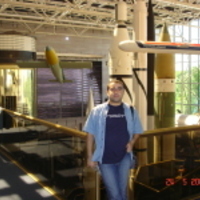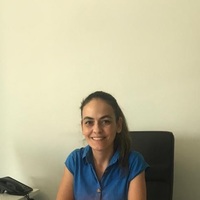ALT-J, Research in Learning Technology, 19(1), 19-38., Jan 1, 2011
We report on the incorporation of e-book readers into the delivery of two distancetaught master's... more We report on the incorporation of e-book readers into the delivery of two distancetaught master's programmes in Occupational Psychology (OP) and one in Education at the University of Leicester, UK. The programmes attract work-based practitioners in OP and Teaching English to Speakers of Other Languages, respectively. Challenges in curriculum delivery included the need for more flexibility in the curricula, better access to essential readings and maximising the benefit of learners' limited study time. As part of a suite of pilot changes to curriculum design and delivery, 28 Sony PRS-505™ e-book readers were preloaded with course materials and sent out to students. The evidence suggests that the students' learning experiences improved as a result of four key benefits afforded by the e-book readers: enhanced flexibility in curriculum delivery to accommodate the mobile lifestyle of our learners, improved efficiency in the use of study time, especially short breaks during the working day, new strategies for reading course materials and cost. We discuss the opportunities and limitations associated with the e-book readers used and the challenges encountered in the study.











Uploads
Papers by Gabi Witthaus
teachers contribute positively to the Psychological Well-Being
(PWB) and educational outcomes of refugee-background
students (RBSs) in a University Sanctuary setting, drawing on
the fields of TESOL, refugee studies, trauma psychology and
positive psychology.
Our project explored the experiences and perceptions of a
group of refugee-background students, including intensive
case studies of six teachers and six students. This mixed
methods research project was conducted in three phases:
Phase 1 constituted an initial survey of 41 refugee-background
students; in Phase 2, teachers engaged in trauma training and
lesson study training before planning, delivering and evaluating
a research lesson with RBSs; in Phase 3, six case students were
interviewed, and the teachers participated in a focus group
discussion. Several data sets were collected: questionnaire
data, recordings of preparation and evaluation meetings,
interviews with students, observations of classroom practice
and a final tutor focus group meeting.
This study found indications that RBSs’ experiences of learning
English can be linked to improvements both in levels of English
and PWB and that the relationship between language learning
and PWB appears to be complex and mutually reinforcing.
Furthermore, many examples of good classroom practice as
well as wider institutional strategies were identified as critical
to facilitating both language learning and refugee PWB. Our
study also found that teachers benefitted significantly from
professional development opportunities focusing on the
promotion of RBSs’ PWB and that trauma training and lesson
study were effective vehicles for teacher analysis of students’
classroom responses.
The principal condition for the success of refugee students
was making them feel valued and unthreatened. This required
a climate characterised by supportive collaborative interaction
among students, positive mutual regard, and teachers being
responsive to individual students’ attributes and experiences.
These are conditions which are likely to help all students
to flourish.
educational practices (OEP), this paper aims at contributing to an understanding of
open practices and how these practitioners learn to use OEP. Our research is guided by
the following hypothesis: Different social configurations support a variety of social
learning activities. The social configuration of OEPs is investigated by an
operationalization into the dimensions (1) practice, (2) domain, (3) collective identity,
and (4) organization. The results show how practitioners of six different OEPs learn,
while acting and collaborating through a combination of offline and online networks.
The findings of our study lead to practical implications on how to support participation
in OEP, and thereby stimulate learning in (online) networks of OEP.
An in-depth case study was conducted of the OER university (OERu) (www.wikieducator.org/oeru). The OERu is a virtual collaboration of institutions committed to creating flexible pathways for OER learners to gain formal academic credit (WikiEducator, 2013). A mixed-methods approach was used combining data from social network analysis, content analysis, and contextual analysis. Both volunteers and academic contributors from the 26 partner institutions were involved in the study.
The results show how networked learning activities are associated with the social configuration (domain - identity - practice - organisation) of the community and that, through the investigation of this configuration, valuable insights can be gained into why networked learning activities are occurring. We see for example that shared domain could provide a solid ground for networked learning activities within a community and that different identities within the community can result in different networked learning activities. By analysing the organisation of the community, different social configurations were unravelled with different roles, goals and learning platforms. These insights may support the OERu community and other OER communities to develop their networked learning activities further in a sustainable way.
o To apply OULDI and Carpe Diem resources to Leicester and SAIDE contexts and to determine the transferability of the existing methodologies to different contexts, in both face-to-face and online settings
o To develop a set of new learning design resources by combining OULDI and Carpe Diem resources
Overall the initiative was highly valued and well-received by the participants. The existing tools and methods were easily transferable to different contexts. The initiative also enabled us to make significant progress in the development of a new learning design intervention – the 7Cs workshop which will be continuously developed and refined through follow up pilots within the University of Leicester and beyond.
into OER have, however, found the experience challenging and daunting. This article puts forward a workflow framework that provides guidance for evaluating existing teaching materials and turning them into OER using indicative questions against which they can be assessed on quality, ease of access, adaptability
and potential usefulness. Recommendations are also made for moving the OER agenda forward, including changing institutional cultures, designing for openness, quality assurance and sustainability.
teachers contribute positively to the Psychological Well-Being
(PWB) and educational outcomes of refugee-background
students (RBSs) in a University Sanctuary setting, drawing on
the fields of TESOL, refugee studies, trauma psychology and
positive psychology.
Our project explored the experiences and perceptions of a
group of refugee-background students, including intensive
case studies of six teachers and six students. This mixed
methods research project was conducted in three phases:
Phase 1 constituted an initial survey of 41 refugee-background
students; in Phase 2, teachers engaged in trauma training and
lesson study training before planning, delivering and evaluating
a research lesson with RBSs; in Phase 3, six case students were
interviewed, and the teachers participated in a focus group
discussion. Several data sets were collected: questionnaire
data, recordings of preparation and evaluation meetings,
interviews with students, observations of classroom practice
and a final tutor focus group meeting.
This study found indications that RBSs’ experiences of learning
English can be linked to improvements both in levels of English
and PWB and that the relationship between language learning
and PWB appears to be complex and mutually reinforcing.
Furthermore, many examples of good classroom practice as
well as wider institutional strategies were identified as critical
to facilitating both language learning and refugee PWB. Our
study also found that teachers benefitted significantly from
professional development opportunities focusing on the
promotion of RBSs’ PWB and that trauma training and lesson
study were effective vehicles for teacher analysis of students’
classroom responses.
The principal condition for the success of refugee students
was making them feel valued and unthreatened. This required
a climate characterised by supportive collaborative interaction
among students, positive mutual regard, and teachers being
responsive to individual students’ attributes and experiences.
These are conditions which are likely to help all students
to flourish.
educational practices (OEP), this paper aims at contributing to an understanding of
open practices and how these practitioners learn to use OEP. Our research is guided by
the following hypothesis: Different social configurations support a variety of social
learning activities. The social configuration of OEPs is investigated by an
operationalization into the dimensions (1) practice, (2) domain, (3) collective identity,
and (4) organization. The results show how practitioners of six different OEPs learn,
while acting and collaborating through a combination of offline and online networks.
The findings of our study lead to practical implications on how to support participation
in OEP, and thereby stimulate learning in (online) networks of OEP.
An in-depth case study was conducted of the OER university (OERu) (www.wikieducator.org/oeru). The OERu is a virtual collaboration of institutions committed to creating flexible pathways for OER learners to gain formal academic credit (WikiEducator, 2013). A mixed-methods approach was used combining data from social network analysis, content analysis, and contextual analysis. Both volunteers and academic contributors from the 26 partner institutions were involved in the study.
The results show how networked learning activities are associated with the social configuration (domain - identity - practice - organisation) of the community and that, through the investigation of this configuration, valuable insights can be gained into why networked learning activities are occurring. We see for example that shared domain could provide a solid ground for networked learning activities within a community and that different identities within the community can result in different networked learning activities. By analysing the organisation of the community, different social configurations were unravelled with different roles, goals and learning platforms. These insights may support the OERu community and other OER communities to develop their networked learning activities further in a sustainable way.
o To apply OULDI and Carpe Diem resources to Leicester and SAIDE contexts and to determine the transferability of the existing methodologies to different contexts, in both face-to-face and online settings
o To develop a set of new learning design resources by combining OULDI and Carpe Diem resources
Overall the initiative was highly valued and well-received by the participants. The existing tools and methods were easily transferable to different contexts. The initiative also enabled us to make significant progress in the development of a new learning design intervention – the 7Cs workshop which will be continuously developed and refined through follow up pilots within the University of Leicester and beyond.
into OER have, however, found the experience challenging and daunting. This article puts forward a workflow framework that provides guidance for evaluating existing teaching materials and turning them into OER using indicative questions against which they can be assessed on quality, ease of access, adaptability
and potential usefulness. Recommendations are also made for moving the OER agenda forward, including changing institutional cultures, designing for openness, quality assurance and sustainability.
We examine opportunities for and outcomes from using ADA for interactive learning by distance and on-campus students at the University of Leicester, where podcasting and voice boards have been introduced into the teaching of a range of subjects. With a simple model, we discuss designing explicit interactive tasks for learners and provide evidence from two case studies of ADA, one using podcasting, the other voice boards. With the same model, we also discuss implicit interactive tasks for learners, illustrated by evidence from a case study of podcasting.
We recommend, based on our research and experience, further use of ADA with podcasts and voice boards, for interactive learning. We discuss future research, such as: Can ADA’s impact on students’ performance be measured? How much extra time do students commit to using ADA? What does ADA cost? How does audio feedback spark student-tutor dialogues, and what effects do these dialogues have? Can other disciplines benefit from using ADA and if so how? Are there advantages in using other voice tools such as voice e-mail and audio blogs to promote interactive learning? Further research is needed, although ADA interactive learning already offers much to learners at a distance and on-campus.
The analysis shows that the learners valued teaching presence, particularly the facilitation element, which they sought and found in a wide range of sources. Feedback on the learners' strengths, weaknesses and understanding of subject matter was seen as another critical element of teaching presence. Online social presence was viewed as being important but generally not well managed in MOOCs, whilst face-to-face contact was highly valued. Regarding cognitive presence, learners focused most on the ways in which they used a range of information sources. Learning presence was described primarily in terms of the importance of goal-setting and planning, and the use of learning strategies. From these depictions of learning, five recommendations were generated for Kiron.
Some aspects of the data generated could not be explained by the CoI framework, pointing to limitations in its use as the sole theoretical tool in a study of this nature, and avenues for future research are considered. 2